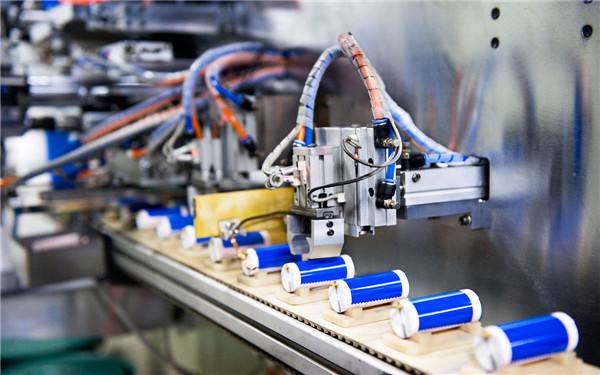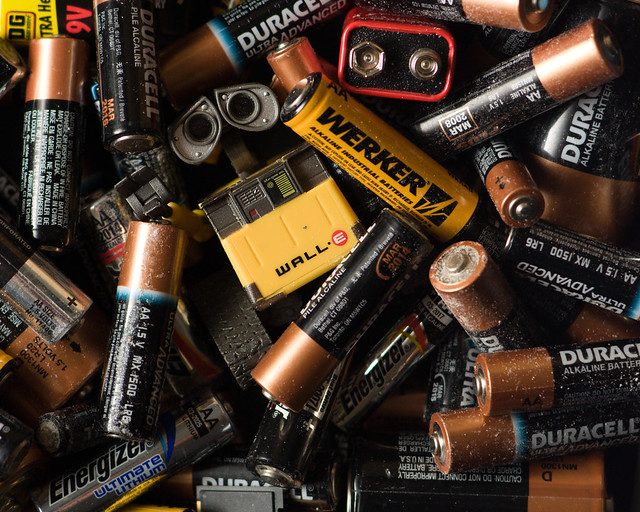How To Make Lithium Battery?
Nov 15, 2019 Pageview:1744
We all know that the world is running on Lithium batteries. And Lithium technology has certainly made our lives easier than ever. From laptops to the smartphones we use and even the vehicles nowadays have lithium batteries infused in the most intelligent way. The benefits of these batteries outweigh the risks and this is the main reason they are on the top of the battery market.
So, here, we are going to discuss how the lithium battery is made. There are many materials used in the batteries and we will explore them in detail along with the working of these batteries. Let’s start.
How Is Lithium Battery Made?
To understand the working of the lithium battery, you must know that there are many components in the system. From anode to cathode, shapes to electrochemistry, there is a deeper science working behind the battery we use.
A typical battery is made up of Anode, Cathode, Separator, Electrolyte, and two current collectors. The lithium element is stored on both sides, i.e. Anode and Cathode. The Electrolyte helps the positively charged lithium ions to move from anode to cathode and vice versa. As the ions move between the electrodes, free electrons are created at the anode which is responsible for inducing charge at the positive current collector. And it is the current collector that is responsible for the flow of electrical current. The separator has the role of blocking the flow of electrons inside the battery that prevents it from short-circuit.
What Materials Are Used To Make A Lithium Battery?
As now you understand the basic idea of a lithium battery, it is time to dig a little bit deeper. The 4 major components that contain the different materials are explained below.
1: Cathode Materials:
The most appropriate cathode material that is batteries is Lithium-metal oxides such as LiCoO2, Li(NixMnyCoz)O2, olivines, LiMn2O4, and some other rechargeable lithium oxides. At present, the layered oxides that contain cobalt and nickel are being studied for the lithium-ion batteries. This is due to the stability of cobalt in high-voltage ranges. But cobalt is toxic in nature and has limited availability.
Manganese is used commonly due to the low-cost substitution and high thermal threshold value of the element. For better results, the combination of manganese, cobalt, and nickel are used to give the best properties and overcome the drawbacks.
2: Anode Materials:
The most common anode materials for Lithium batteries are Lithium, lithium-alloys, graphite, silicon, and some other carbon compounds. Lithium is a straightforward material but it has several problems linked. The cycling behavior of lithium and dendritic growth is dangerous for the battery. Therefore, carbonaceous materials are most preferred for lithium batteries as they are easily available and have a low cost. Of course, the capacity of the battery is compromised, but the scientists are still trying to make the best mixture that will fade away the drawbacks and we get the best results.
3: Electrolyte Material:
For electrolyte, a lithium battery needs an electrolyte which is robust and can withstand the high temperature and existing voltage. Along with this, the electrolyte should also possess a long shelf life while maintaining the mobility of lithium-ions. Therefore, liquid, polymer, and solid-state electrolytes are used. The organic and solvent-based electrolyte is the best choice for the lithium battery. It contains LiBC4O8 (LiBOB), LiPF6, Li[PF3(C2F5)3], and some similar compounds. While choosing the electrolyte, we have to take the flammability of the solvents into consideration along with the possible thermal runaway conditions. And that is how the electrolyte is decided.
4: Separators:
It is the material that separates the two electrodes from each other in order to prevent the short-circuit of the lithium battery. When the electrolyte used is liquid then a foam separator is used to hold the electrolyte in its place. The separator used must be an electronic insulator and have a minimal resistance for the electrolyte. Maximum mechanical stability, chemical resistance to degradation, etc, are some common properties that the separator must-have.
A good thing for the batteries that used solid-state electrolytes and some polymer electrolytes is that they don’t need any separator material.
How Does A lithium-ion battery Work?
Like any other battery, the working of a Lithium-ion battery is similar. The basic component of the batteries is the power generating component called cell. Each cell contains three essential components, a positive electrode, a negative electrode, and a chemical electrolyte. As the name suggests, the positive electrode is connected to the battery’s positive terminal and the negative electrode is connected to the negative terminal.
The working of the batteries is pretty straightforward. During charging, the positive electrode gives up some lithium ions and they move through the electrode to reach the negative ion. Then the ions are stored at the negative electrode. Once the maximum ions are stored on the negative side, the battery gets fully charged. Now during the discharge process, the lithium ions move back to the positive electrode, releasing energy that power up the battery.
The movement of ions and electrons is an interconnected process. Both this process goes hand-in-hand. If the ions stop moving because the battery is completely discharged, then the electron flow is also disrupted in the outer circuit. The same thing happens when you switch off the device that the battery is powering. The movement of ions is halted and the battery stops discharging at a high rate. However, the discharge process continues at a very slow rate even if the appliance stops using power.
The best feature of Lithium-ion batteries is their Electronic Controllers. These controllers regulate how the batteries are charged and discharged. This gives protection against overcharging and overheating of the batteries and prevents them from exploding in some unfortunate circumstances.
As you can see, the battery chemistry is not as complicated as it sounds. But there are many aspects of the Lithium-batteries that can only be dealt with by experts. So, if you someday make an attempt to design a lithium battery, follow up all the precaution and safety measures.
- Prev Article: How to send Lithium batteries in the post?
- Next Article: How to Measure Lithium-ion Battery Capacity?
Leave Message
Hottest Categories
-
Hottest Industry News
-
Latest Industry News











